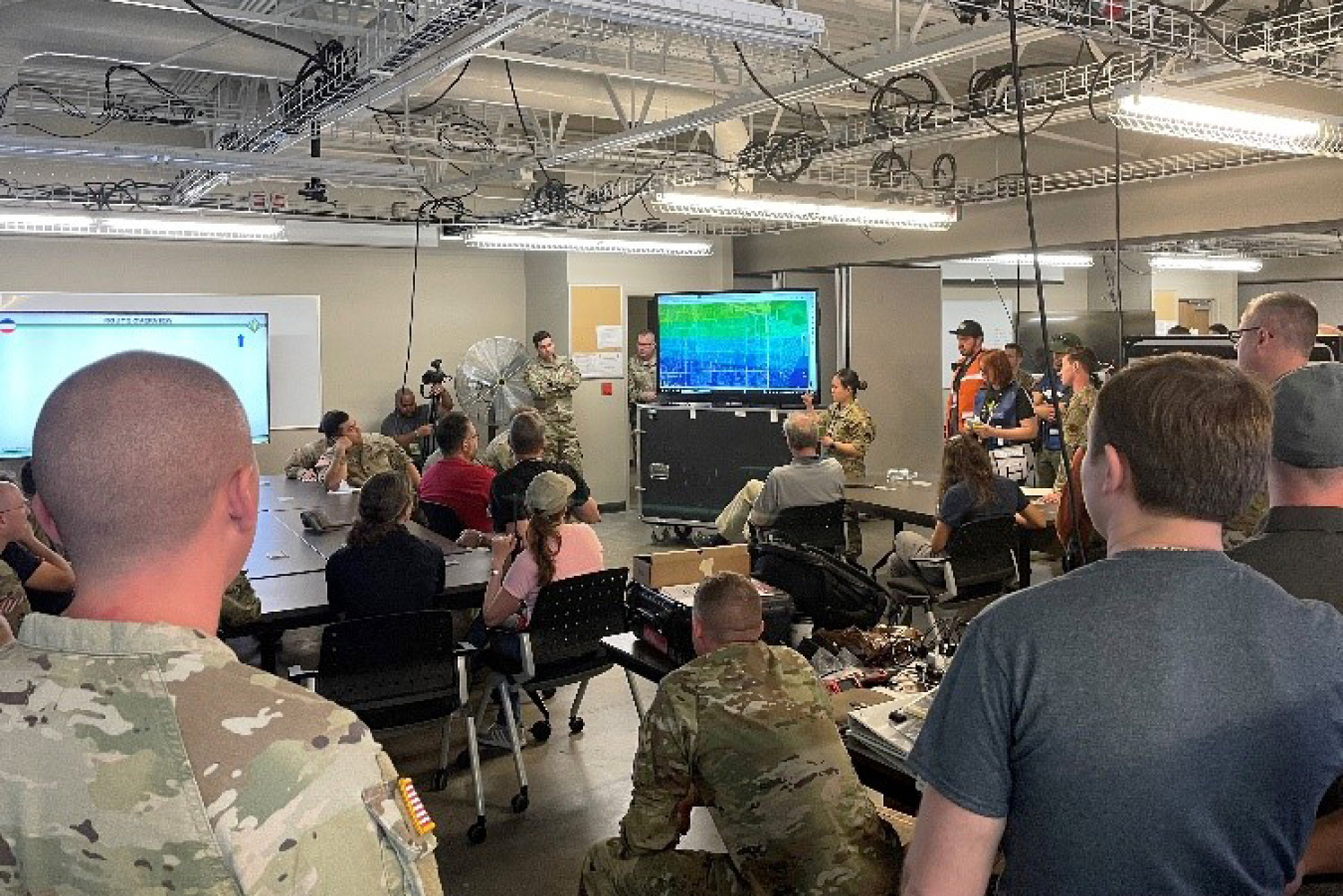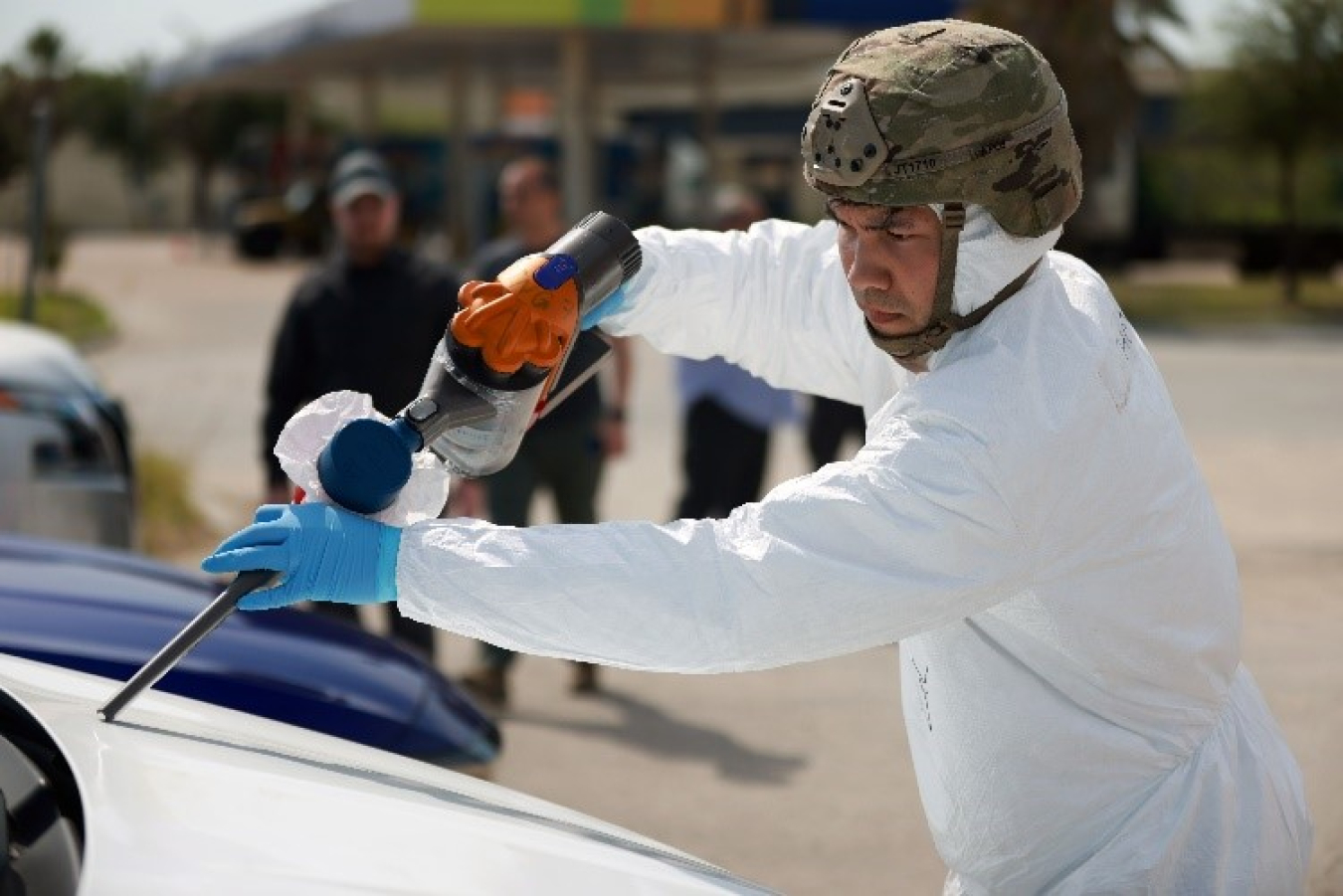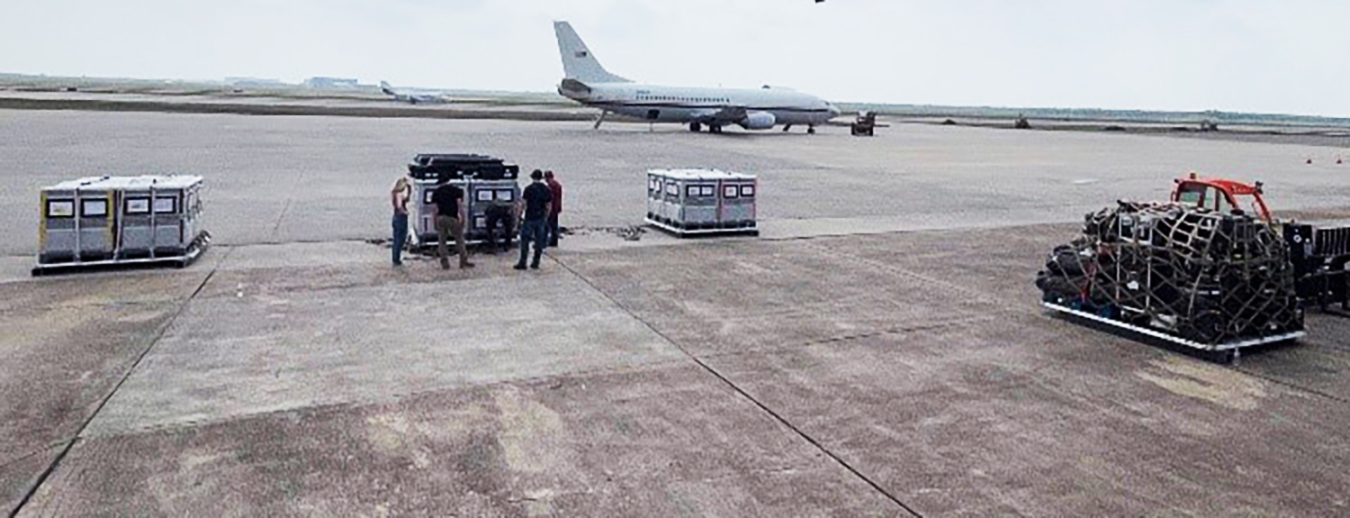At an exercise held earlier this month in Houston, NNSA’s Office of Counterterrorism and Counterproliferation teamed with its federal, state, and local partners to practice the first steps to responding to a hypothetical act of nuclear terrorism.
National Nuclear Security Administration
May 22, 2023
At an exercise held earlier this month in Houston, NNSA’s Office of Counterterrorism and Counterproliferation (CTCP) teamed with its federal, state, and local partners to practice the first critical steps to responding to a hypothetical act of nuclear terrorism: determining who was responsible so they could be brought to justice. The key to that is nuclear forensics.

Nuclear forensics—the science of determining the origin of nuclear material—can help identify whether a hostile foreign government helped facilitate a nuclear attack, which terrorists are unlikely to conduct without state assistance. The knowledge that the United States can attribute the source of nuclear material used in a terrorist attack may make adversary nations reluctant to provide such assistance, knowing they will be subject to U.S. retribution.
The National Technical Nuclear Forensics Ground Collection Task Force holds these Prominent Hunt exercises regularly to ensure readiness to conduct its mission in case of a terrorist attack.
We would also be able to determine if a nation used a nuclear device directly but denied responsibility or tried to blame someone else.
“We exercise our capabilities in a very public way to deter our enemies and protect the United States and our friends against terrorist nuclear attacks,” said Grant Ford, Director of the CTCP Office of Nuclear Forensics. “We would also be able to determine if a nation used a nuclear device directly but denied responsibility or tried to blame someone else.”
Once on location, task force members collect and test simulated samples of nuclear fallout debris - the radioactive particles that result from a nuclear explosion.
“In this scenario, getting the right samples to the national laboratories is crucial to a solid nuclear forensics analysis,” explained Patrick Ragen, NNSA’s lead planner for Prominent Hunt.
To do that, Task Force members follow these steps:
- Department of Defense personnel collect simulated nuclear debris samples from locations guided by a computer-generated model of the detonation fallout and with special instruments that identify the optimum samples.
- NNSA laboratory scientists on the scene make sure that the samples are the best ones for accurate analysis by using specialized equipment.
- Members of the FBI package and transport the samples to Los Alamos National Laboratory (LANL) in New Mexico and Pacific Northwest National Laboratory (PNNL) in Washington state for analysis.
In this scenario, getting the right samples to the national laboratories is crucial to a solid nuclear forensics analysis.
In a real event, LANL and PNNL scientists would painstakingly examine each sample to identify what type of nuclear material was used and where it came from. LANL and Lawrence Livermore National Laboratory scientists would also use nuclear forensic techniques to determine the design of the device, which would offer insights into whether a hostile state had assisted in its construction.
CTCP maintains a broad range of nuclear forensics capabilities and has supported the Task Force since it began the Prominent Hunt exercises with state and local partners in 2012.
The Biden Administration’s 2022 Nuclear Posture Review emphasizes the deterrent value of nuclear forensics, noting the capability “contributes to the deterrence of both non-state actors and hostile states that might contemplate providing nuclear material or other assistance to would-be nuclear terrorists, and provides for response options should deterrence fail.” The document underscores that nuclear forensic tools “provide the scientific basis to hold such states accountable.”
To learn more about CTCP’s nuclear forensics mission visit CTCP’s webpage.


